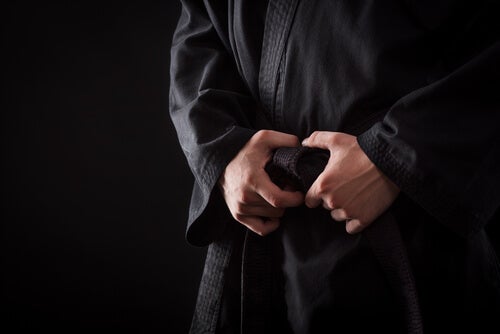Self-Defense According to Eastern Philosophy

There are times in life where you need to be capable of self-defense. As peaceful as you may be, sooner or later you’ll find yourself in a conflict where someone tries to impose themselves on you or limit your ability to act in some way. Or maybe someone will offend you in some way and you’ll feel like you have to respond.
The most common response to aggression or insults is to attack back. Someone yells at you, so you yell too. Or, someone physically attacks you, and you respond in kind. This is the obvious reaction because there are no real guidelines in the Western world on how to defend yourself any other way.
“Masters and saints may appear as simpletons. Those who are pretentious declare to the world that they are just novice scholars or martial artists.”
-Gichin Funakoshi-
Eastern philosophy, on the other hand, has given a lot of thought to war, combat, and conflict. Martial arts are just one product of that and self-defense is a central aspect of them. So, if you want to learn a bit about self-defense through the lens of martial arts, keep reading to discover some key points.

The philosophy behind self-defense
Martial artists avoid confrontation except as a last resort. That’s the basis of their strategy, both in terms of attack and defense. All of the tactics involved are about neutralizing your opponent or simply persuading them not to fight in the first place.
Anything you do or say in self-defense must obey the basic principles of not destroying, harming, or humiliating your opponent. Doing that would only increase their desire for violence. But remember that it isn’t the goal of martial arts; the goal is harmony.
Eastern philosophers knew that conflict always comes at a high cost. When harmony is broken, the best thing to do is find a way to bring it back, not intensify the problem or take it any farther. This is the first principle you need to have in mind for self-defense.
Attitude is fundamental
If you’re in a situation with physical aggression, Eastern philosophers recommended that you stay calm. That calmness should be present in your body too; it should look relaxed, not tense.
That’s something you can achieve with practice and breathing control. If you take slow, deep breaths, your muscles won’t tense up so much.
The art of defending yourself from physical attacks also involves the following actions:
- Keep your distance from the attacker as much as you can.
- Don’t make mechanical or automatic movements; always move with intention.
- Step back and think, and try to understand where the other person is coming from.
- Learn to fall and get back up.
- Try to use your peripheral vision to get a fuller picture.
- Keep your body upright, with your feet firmly on the ground. Your muscles should still be relaxed, though.
This is a very simplified version of what martial arts say you should do in conflict. Every one of those points has a specific philosophy behind it and takes years of experience. But that doesn’t mean you can’t use them as a helpful framework, and as guidelines for your practice.
Physical attacks are also very similar to verbal attacks at their heart. They involve similar mechanisms and only differ at the tools. Thus, you can actually apply the same basic principles of physical self-defense as you can with verbal attacks.
Verbal attacks
Eastern philosophy says that you should never allow someone to verbally insult or humiliate you. But that doesn’t mean you should respond with the same tactics. There are other strategies you can use.
Many of them actually involve body language. You want your body to send a message of firmness and peace. Here are some tips on posture and actions:
- Look firmly at the verbal attacker for a moment, then soften your gaze without looking down.
- Look at the other person with a confused look, then move back.
- Don’t slouch; keep your posture straight and poised.
- Don’t avoid eye contact, no matter how uncomfortable the situation is.
- Lastly, don’t talk if the other person isn’t listening.

If you’re understanding and compassionate enough towards the other person, you’ll know how to defend yourself. Of course, to do that you have to first know yourself, understand yourself, and know how to convey your own emotions.
If you find yourself in a verbal confrontation, these are the three strategies Eastern philosophy recommends:
- Back off. This is a good option when the other person’s attitude, or the situation, make you think things are probably going to get ugly. This means either saying nothing, leaving, or changing the subject.
- Call a truce. You should do this when you see the other person is being reasonable or seems pained by the conflict. In this case, you should try to reach an agreement.
- Do nothing. This is what to do if you feel their attack is uncalled for or you aren’t sure whether they’re in the right. In this case, you stay still and in silence, ideally with your eyes closed.
All cited sources were thoroughly reviewed by our team to ensure their quality, reliability, currency, and validity. The bibliography of this article was considered reliable and of academic or scientific accuracy.
- Avelar-Rosa, B., Gomes, M., Figueiredo, A., & López-Ros, V. (2015). Caracterización y desarrollo del “saber luchar”: contenidos de un modelo integrado para la enseñanza de las artes marciales y de los deportes de combate. Revista de Artes Marciales Asiáticas, 10, 16-33.
This text is provided for informational purposes only and does not replace consultation with a professional. If in doubt, consult your specialist.








